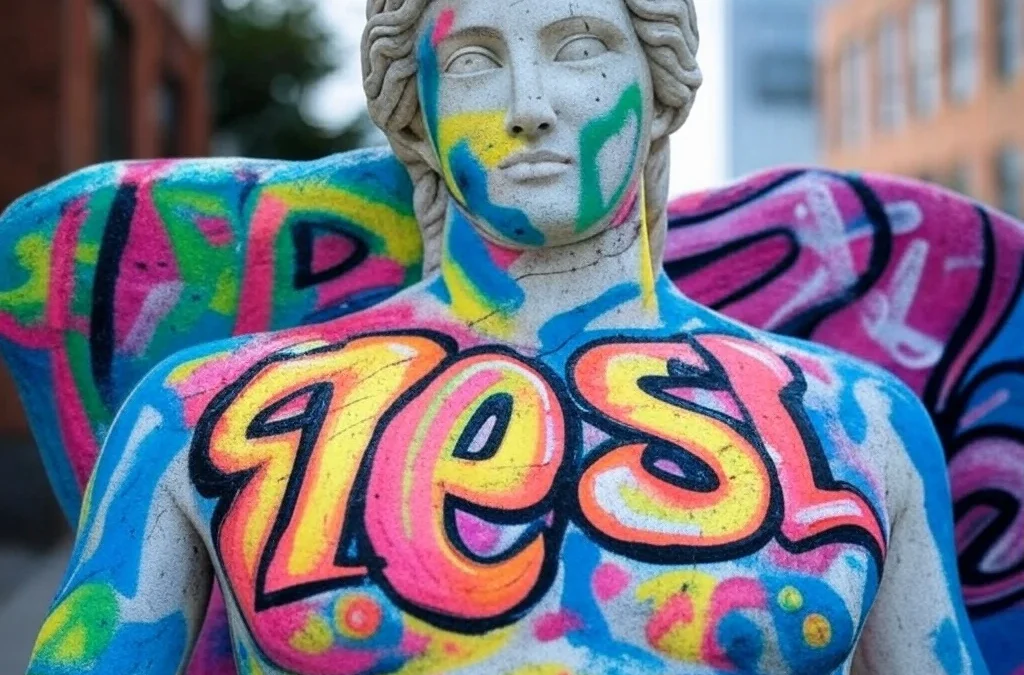In today’s increasingly interconnected world, cultural diversity has become a pivotal aspect of both social and professional environments. The benefits of embracing a multitude of cultures are vast, ranging from enhanced creativity and broader perspectives to improved problem-solving skills. Organizations and societies that value and integrate diverse cultural backgrounds tend to be more innovative and adaptable, leveraging the varied experiences and viewpoints of their members. This richness in perspectives is not just beneficial in tackling complex problems but also plays a critical role in fostering mutual understanding and respect among different communities.
However, managing and embracing cultural diversity is not without its challenges. Communication barriers, cultural misunderstandings, and implicit biases can often lead to conflicts or inefficiencies in collaborative environments. These challenges require careful and thoughtful strategies to ensure that the potential of diversity is fully realized. Addressing these issues involves not only recognizing but also actively celebrating differences, while implementing inclusive practices and policies. Navigating the delicate balance between unity and diversity is essential for creating harmonious and productive communities and workplaces.
What is Cultural Diversity?
Cultural diversity refers to the variety of cultural or ethnic groups within a society. It encompasses the acceptance and respect of these differences, including language, religion, race, and socioeconomic status. Embracing cultural diversity involves recognizing the value of different perspectives and fostering an environment of inclusivity and mutual respect. This concept is pivotal in promoting social cohesion, enhancing creativity and innovation, and contributing to the overall health and growth of communities. Cultural diversity enriches societies by providing a broad spectrum of ideas, customs, and wisdom, essential for the progressive development of the global community.
Cultural diversity also plays a crucial role in the educational and workplace environments. In education, it enhances learning by exposing students to a wide range of perspectives, preparing them for a globalized world. In the workplace, it drives innovation and problem-solving by bringing together varied experiences and viewpoints.
Moreover, cultural diversity is key to fostering empathy and reducing prejudices. By interacting with people from different backgrounds, individuals can better understand and appreciate each other’s experiences, leading to more harmonious and inclusive societies.
In the broader context, cultural diversity contributes significantly to the cultural, economic, and political life of nations. It enriches cultural expressions through the arts, literature, and traditions, and it strengthens democratic processes by involving diverse groups in decision-making.
Understanding and appreciating cultural diversity are essential for peaceful coexistence in an increasingly interconnected world. It promotes not only tolerance and respect but also the celebration of the rich tapestry of human life, with its varied hues and patterns, contributing to the vibrant mosaic of global culture.
Advantages of Cultural Diversity
1. Innovation and Creativity – Diverse teams bring together individuals with unique perspectives, experiences, and problem-solving approaches. This diversity of thought often leads to more innovative and creative solutions.
2. Global Perspective – Exposure to different cultures broadens individuals’ horizons, fostering a global mindset. This broader perspective is increasingly valuable in our interconnected world.
3. Language Skills – In a culturally diverse environment, people often have the opportunity to learn and practice multiple languages. This not only facilitates communication but also enriches the linguistic capabilities of individuals.
4. Cultural Exchange – Cultural diversity encourages the exchange of traditions, customs, and practices. This cross-cultural interaction promotes mutual understanding and appreciation.
5. Adaptability – Exposure to diverse cultures enhances individuals’ adaptability and flexibility. This is particularly valuable in dynamic and rapidly changing environments.
6. Increased Productivity – Diverse teams benefit from a variety of skills and viewpoints, contributing to increased productivity. The synergy of different talents often leads to more effective and efficient outcomes.
7. Enhanced Problem-Solving – Cultural diversity fosters a more comprehensive approach to problem-solving. Different cultural backgrounds bring unique insights that collectively contribute to a well-rounded solution.
8. Tolerance and Empathy – Interacting with people from diverse backgrounds promotes tolerance, empathy, and a deeper understanding of others. This, in turn, contributes to a more harmonious and inclusive environment.
9. Market Expansion – Understanding diverse markets is crucial for businesses seeking to expand globally. Cultural diversity within a team provides valuable insights for better targeting and connecting with diverse consumer bases.
10. Richer Art and Culture – A mix of cultural influences often leads to a more vibrant and rich arts and cultural scene. This can manifest in various forms, including literature, music, and visual arts.
11. Global Business Opportunities – Businesses that embrace cultural diversity are better positioned to explore and seize international opportunities. Understanding diverse cultures is a key asset in the global marketplace.
12. Diverse Talent Pool – Organizations that actively promote diversity attract a broader range of skills and talents. This, in turn, helps in building a more dynamic and capable workforce.
13. Social Harmony – Embracing diversity contributes to social harmony by fostering inclusivity and reducing prejudices. It promotes the idea that differences should be celebrated rather than used as a source of division.
14. Learning Opportunities – Continuous exposure to different cultures provides ongoing learning opportunities. This learning goes beyond the workplace and extends to personal growth and development.
15. Economic Growth – Cultural diversity can be a driver of economic growth. Through creativity and innovation, diverse communities and organizations contribute to economic development and prosperity.
Challanges of Cultural Diversity
1. Communication Barriers – Differences in language and communication styles can lead to misunderstandings, hindering effective collaboration and teamwork.
2. Cultural Clashes – Conflicts may arise due to differing cultural norms, values, and practices. These clashes can create tension and disrupt the cohesion of a group or community.
3. Resistance to Change – Some individuals may resist adapting to a diverse environment due to unfamiliarity or discomfort with change. This resistance can impede the overall effectiveness of diversity initiatives.
4. Stereotyping and Bias – Prejudice and stereotypes based on cultural backgrounds can lead to unfair treatment of individuals. Overcoming these biases is a continuous challenge in diverse settings.
5. Cultural Insensitivity – Lack of awareness or understanding can result in unintentional cultural insensitivity. This may manifest in inappropriate remarks or actions, negatively impacting relationships.
6. Group Segregation – In certain situations, cultural diversity can lead to groups segregating themselves along cultural lines. This separation can hinder effective collaboration and integration.
7. Integration Challenges – Assimilating individuals from diverse backgrounds into a cohesive whole can be challenging. Ensuring everyone feels included and valued requires proactive efforts.
8. Power Dynamics – Unequal power dynamics may emerge within diverse groups, affecting decision-making processes. Addressing these imbalances is crucial for maintaining fairness and equality.
9. Conflict Resolution – Resolving conflicts arising from cultural differences requires specialized skills. Mediators who understand the cultural nuances involved are essential for effective conflict resolution.
10. Misinterpretation of Intent – Actions or statements may be misinterpreted due to cultural differences, leading to misunderstandings and strained relationships.
11. Lack of Inclusivity – In some cases, individuals or groups may feel excluded or marginalized. Promoting inclusivity is essential for creating a truly diverse and harmonious environment.
12. Difficulty in Team Building – Building cohesive teams can be challenging when individuals come from diverse cultural backgrounds. Effective team building requires a nuanced understanding of cultural dynamics.
13. Cultural Shock – Individuals exposed to unfamiliar cultures may experience cultural shock, which can impact their well-being and ability to adapt.
14. Linguistic Challenges – Language barriers can impede effective communication, hindering collaboration and creating barriers to understanding.
15. Cultural Bias – Cultural biases may inadvertently influence decision-making processes, potentially leading to unfair outcomes. Addressing these biases requires ongoing awareness and education.
Importance Of Cultural Diversity
In an increasingly interconnected world, the tapestry of cultural diversity has emerged as a cornerstone of modern society. This diversity, a mosaic of varying customs, traditions, and perspectives, is not just a colorful backdrop to our daily lives, but a fundamental aspect of our collective human experience. It enriches our communities, broadens our understanding, and adds depth to the narrative of what it means to be human.
Cultural diversity, at its core, is about the coexistence of different ways of life, beliefs, and values. It’s a recognition that the world is a vast place, with each culture offering a unique lens through which we can view life. This diversity challenges us to think beyond our own experiences, fostering empathy and tolerance. In a diverse society, we are constantly exposed to different ways of thinking, which can be both enlightening and humbling.
One of the most profound impacts of cultural diversity is its contribution to innovation and creativity. When people from various backgrounds come together, they bring distinct ideas and perspectives. This melting pot of thoughts can lead to breakthroughs in all fields, from arts to science. It’s not just about having a variety of opinions, but about how these differing viewpoints can collide and intertwine, sparking new ideas and solutions.
Moreover, cultural diversity is essential for a dynamic and vibrant society. It offers a range of experiences, from culinary delights to artistic expressions, enriching our lives in countless ways. This diversity makes our communities more interesting and lively, offering opportunities to explore and learn about different ways of life. It’s like having the world at our doorstep, giving us a chance to travel the globe without leaving our neighborhood.
Educationally, cultural diversity plays a pivotal role. It provides a real-world context to understand and appreciate the complexity of the world. In schools and universities, exposure to diverse cultures prepares students for a globalized workplace, where cultural sensitivity and adaptability are key skills. This exposure not only broadens students’ horizons but also equips them with the tools to navigate and thrive in a multicultural world.
Importantly, cultural diversity also contributes to a more inclusive society. It encourages dialogue and interaction, breaking down barriers of misunderstanding and prejudice. This interaction fosters a sense of community and belonging, where differences are not just tolerated, but celebrated. In such a society, individuals feel valued and included, regardless of their cultural background.
However, embracing cultural diversity is not without challenges. It requires an open mind and a willingness to step out of one’s comfort zone. It involves confronting biases and stereotypes, and actively seeking to understand and respect other cultures. This process of cultural exchange and adaptation can sometimes be uncomfortable, but it is through this discomfort that growth and learning occur.
In conclusion, the importance of cultural diversity cannot be overstated. It is not merely a pleasant feature of a modern society but a fundamental component that drives innovation, enriches our lives, and fosters a more inclusive and dynamic community. By embracing and celebrating our differences, we not only enhance our own lives but also contribute to a more vibrant, creative, and empathetic world.
How Does Cultural Diversity Contribute to Innovation?
Cultural diversity serves as a catalyst for innovation by fostering an environment where a myriad of perspectives converges to generate more innovative solutions and creative ideas. The collision of different cultural backgrounds within a diverse group creates a dynamic and fertile ground for the exchange of unique experiences and approaches. Everyone, shaped by their cultural context, brings a distinctive set of insights and problem-solving methods to the table. In this environment, the synergy of diverse minds transcends conventional thinking, opening new avenues of exploration and sparking creativity. The rich tapestry of varied perspectives not only encourages thinking outside the box but also challenges existing paradigms. This diversity in thought and approach contributes to the development of forward-thinking outcomes, allowing for the exploration of unconventional solutions that might not have emerged in a more homogenous setting. In essence, cultural diversity in a collaborative context becomes a powerful driver of innovation, propelling individuals, and organizations toward more adaptive, inventive, and impactful results.
What Is the Difference Between Diversity and Inclusion?
The distinction between diversity and inclusion lies in their focus and implementation within the context of organizations and communities. Diversity encompasses the range of differences among people, encompassing factors such as race, ethnicity, gender, age, sexual orientation, socio-economic status, physical abilities, and cultural background. It acknowledges the unique characteristics and perspectives that individuals bring to the table, highlighting the inherent richness that arises from these differences.
On the other hand, inclusion represents the intentional and proactive effort to create an environment where all individuals, regardless of their diverse backgrounds, feel valued, respected, and included in every aspect of organizational life. Inclusion goes beyond mere acknowledgment of diversity; it is a commitment to fostering an atmosphere where every voice is heard, and every perspective is considered. It involves breaking down barriers that may hinder certain groups from fully participating in decision-making processes, collaboration, and the overall organizational culture.
Inclusion recognizes that diversity alone does not guarantee a sense of belonging or equitable treatment. It emphasizes creating structures and practices that actively promote equal opportunities, fair treatment, and participation for everyone. In an inclusive environment, individuals are not only present but are also actively engaged and have a sense of belonging. It is about embracing and leveraging diversity to create a culture that appreciates and benefits from the unique strengths each individual brings, fostering a sense of unity and cohesion within the broader community or organization.
In essence, while diversity celebrates differences, inclusion is the deliberate and ongoing effort to ensure that these differences are not just acknowledged but fully integrated into the fabric of organizational life, fostering a culture of equity, respect, and belonging. Together, diversity and inclusion work hand in hand to create environments that are not only diverse but also genuinely welcoming and empowering for all individuals, regardless of their background or identity.
How Can Communities Embrace Cultural Diversity?
Communities can foster a vibrant tapestry of cultural diversity through a multifaceted approach that goes beyond mere acknowledgment to active engagement and celebration. Organizing cultural events is a powerful means to showcase the richness of various traditions, customs, and practices. These events provide platforms for community members to share their heritage, fostering a deeper understanding and appreciation for the diversity present.
Promoting intercultural dialogue plays a pivotal role in breaking down barriers and fostering connections among community members. Open and respectful conversations allow individuals from different backgrounds to share their experiences, learn from one another, and build bridges of understanding. This exchange of perspectives helps to create a more cohesive and harmonious community.
Supporting multicultural organizations within the community amplifies the voices of diverse groups and ensures that their unique needs and contributions are recognized. These organizations often serve as essential hubs for cultural expression, advocacy, and community support, further reinforcing the importance of cultural diversity.
Incorporating diverse perspectives in community initiatives is essential for creating inclusive environments. By actively seeking input from individuals representing various cultural backgrounds, communities can ensure that their programs, policies, and projects are reflective of the collective needs and aspirations of all residents.
Fostering inclusive policies that celebrate the richness of different cultures is a cornerstone of embracing cultural diversity. These policies should be designed to eliminate discrimination, promote equal opportunities, and create a supportive environment for individuals from all backgrounds. Inclusivity in governance ensures that decision-making processes are representative and considerate of the diverse tapestry that makes up the community.
Overall, embracing cultural diversity in communities requires a concerted effort that goes beyond superficial recognition. It involves active engagement, open dialogue, and the creation of inclusive spaces and policies that celebrate and respect the unique contributions of individuals from various cultural backgrounds. By weaving cultural diversity into the fabric of community life, societies can create environments that thrive on the collective strength of their diverse members.
Read Also: Top 30 Cultural Immersion Examples
The Most Popular on BitGlint

30 Defiance Examples & Meaning
Defiance is something most people experience at some point in life. You feel it when you say no to something that...

30 Cynicism Examples in Everyday Life & Definition
Cynicism is something most people have seen, heard, or even felt - but few stop to really think about what it means....

30 Ethical Dilemma Examples & Definition
Ethical dilemmas are not just topics for classrooms or philosophers. They happen to regular people every day - in...

100 Social Interaction Examples
In our increasingly digital world, the art of face-to-face social interaction remains essential for personal growth,...

100 Open-Ended Questions: Examples & Meaning
Open-ended questions are questions that invite explanation, opinion, or personal stories. Unlike yes-or-no questions,...

30 Regret Examples & What It Means
Regret is a common human emotion that almost everyone experiences at some point in their lives. It shapes our...

30 Transgression Examples & Definition
We all know what it feels like when someone “crosses the line.” Maybe they say something they shouldn't. Maybe they...
Get Inspired with BitGlint
The Latest
Hermaphroditus (Greek Mythology)
In Greek mythology, Hermaphroditus was born as the son of Hermes, the messenger god, and Aphrodite, the goddess of love and beauty. His name combines those of his parents—Hermes and Aphrodite. As the child of two Olympian deities, Hermaphroditus was extraordinarily...

30 Obedience Examples & What It Really Means
Obedience is a part of everyday life, whether we notice it or not. From following traffic laws to listening to a parent or teacher, we all experience it in one way or another. But what does obedience really mean? Why do people obey — and when should they? In this...
50 Things That Are Smart
We all know someone who seems naturally clever. Maybe they pick up new skills quickly or always have the right answer. Being smart isn't just about book smarts or having a high IQ. It shows up in many forms - from problem-solving and adapting to new situations to...
List of 100 Empty Things in Life, Space, and Words
In our overcrowded world, emptiness can feel like a rare commodity—yet it surrounds us in unexpected ways. This collection explores the physical, emotional, and metaphorical emptiness we encounter throughout our lives. From the haunting silence of abandoned spaces to...

